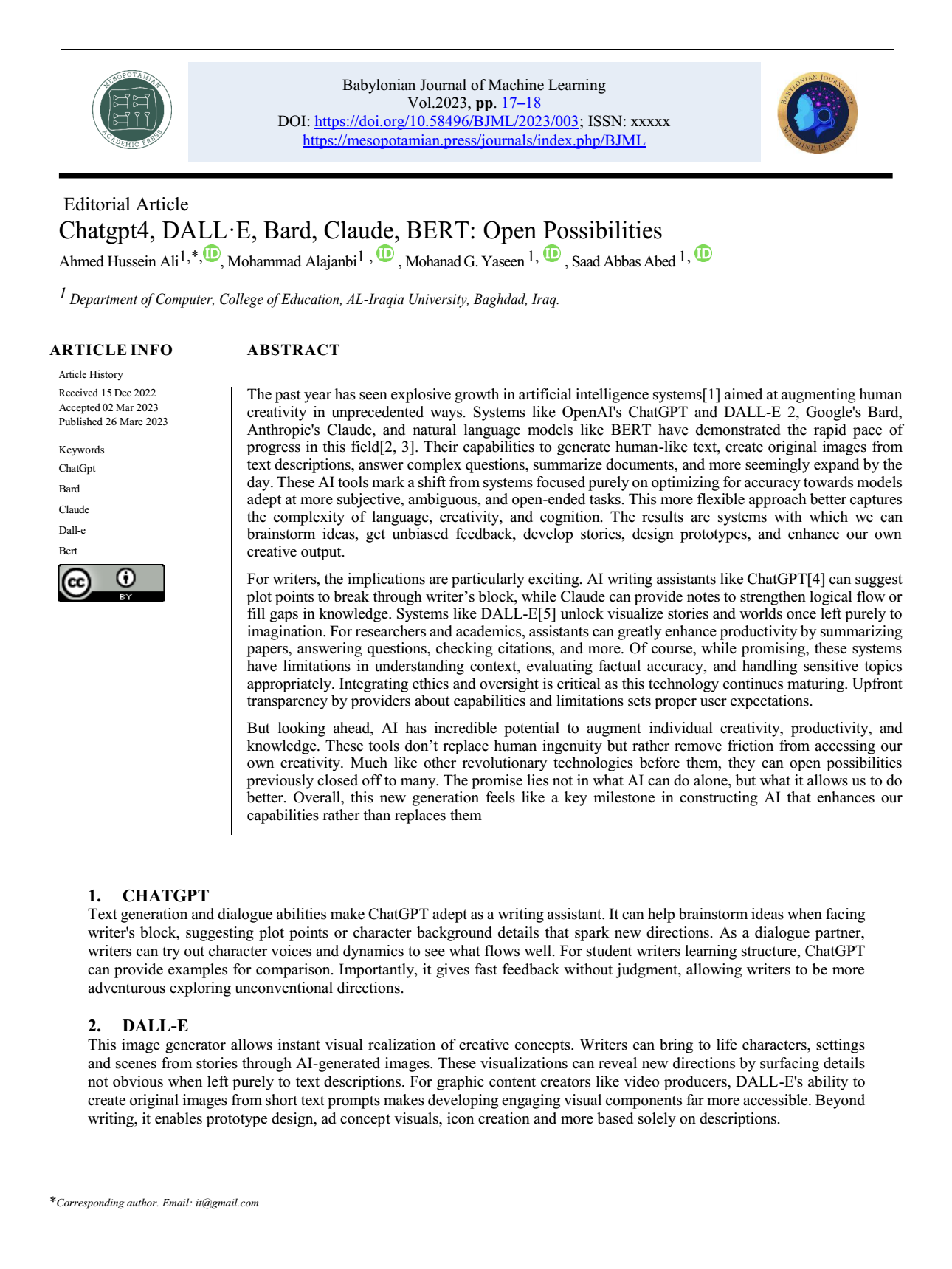Chatgpt4, DALL·E, Bard, Claude, BERT: Open Possibilities
Main Article Content
Abstract
The past year has seen explosive growth in artificial intelligence systems[1] aimed at augmenting human creativity in unprecedented ways. Systems like OpenAI's ChatGPT and DALL-E 2, Google's Bard, Anthropic's Claude, and natural language models like BERT have demonstrated the rapid pace of progress in this field[2, 3]. Their capabilities to generate human-like text, create original images from text descriptions, answer complex questions, summarize documents, and more seemingly expand by the day. These AI tools mark a shift from systems focused purely on optimizing for accuracy towards models adept at more subjective, ambiguous, and open-ended tasks. This more flexible approach better captures the complexity of language, creativity, and cognition. The results are systems with which we can brainstorm ideas, get unbiased feedback, develop stories, design prototypes, and enhance our own creative output.
Article Details
Issue
Section

This work is licensed under a Creative Commons Attribution 4.0 International License.
Deprecated: json_decode(): Passing null to parameter #1 ($json) of type string is deprecated in /home/u273879158/domains/mesopotamian.press/public_html/journals/plugins/generic/citations/CitationsPlugin.php on line 68
